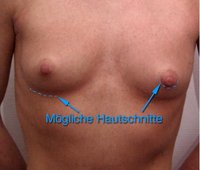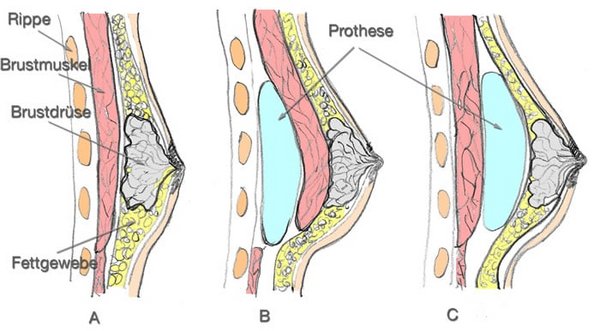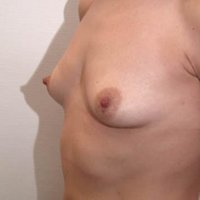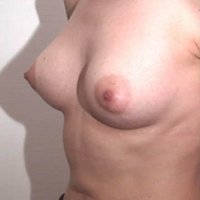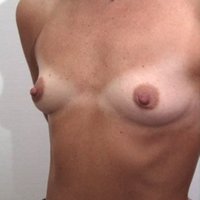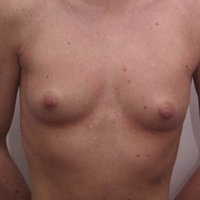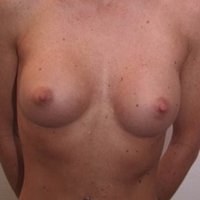Breast Augmentation (augmentation mammaplasty)
If you are interested in having a breast augmentation this information will be very helpful to you. This surgery requires an implantation of prostheses. For any further details however, a personal consultation is essential.
What do you have to know about Prostheses and Silicone?
Prostheses used in breast augmentation surgery have a silicone wrapping and are filled either with a solution of saltwater or silicone gel. There are prostheses filled with hydro gel but they are not used frequently. Increasingly, prostheses have an anatomical shape and have a greater volume in the inferior part of the prostheses; therefore mimicing a more natural breast shape. This is perfect for slim women. Progress in prostheses development has succeeded in creating a less liquid, more gel-like consistency silicone which remains pleasant to the touch. Thanks to these new prostheses it will almost be impossible for the silicone to spread throughout the body if the casing of a prosthesis breaks.
Scientific and Reliable Studies
- It has been proven that after a breast augmentation using breast silicone implants, the risk of having breast cancer does not increase but decreases.
- Studies show that there is no correlation between the appearance of autoimmune diseases (such as rheumatism, lupus erythematosous and sclerodermitis) and the implant of silicone prostheses.
Purpose of the Surgery
Breast augmentation enables the size of the breasts to be enlarged significantly. A natural, aesthetically pleasing breast shape is sought for. Therefore, the nipples need to be well placed. If the breasts are too low, the surgeon undertakes a breast lift (mastopexy). This will lead to more scarring. For patients with asymmetrical breasts, the surgeon uses two different sized prostheses. It is difficult to achieve a perfect symmetry between the two breasts, which in fact, does not exist in nature either.
For a simple breast augmentation the surgeon makes an incision along the fold underneath the breast (sometimes lower) or at the inferior border of the areola.
Personal Consultation
Prior to surgery, the patient and surgeon have the opportunity to discuss the changes she desires regarding the appearance of her breasts, the size of the prostheses and the operation technique employed. In order to correct the breasts in the best way, decisions regarding where the incisions will be made, the exact position of the implants and whether a breast lift will be necessary, are also made. The surgeon will ask questions about the health of the patient, whether she takes medication and if there is a history of breast cancer in the family.
Operation Technique
During the breast augmentation surgery, the surgeon makes an incision in the skin and the mammary tissue is peeled away in order to create a pocket to receive the implant. The incision can be done at different sites: in the fold of the breast, around the nipple, in the hollow of the axillary and very rarely in the area of the navel.
The mammary implants can be introduced under the pectoral muscle (B) or under the mammary gland. This decision depends above all on the thickness of the soft tissues in the area of the breasts and the thorax (thickness of the fat layer) and also the patient’s choice.
Anaesthetic
Most breast augmentations are performed under general anaesthetic. Local anaesthetic is only possible with an additional injection of sedatives.
Length of Surgery
Breast augmentation normally takes one to two hours. This depends on the technique employed and the final positioning of the prosthesis.
Outpatient or Inpatient?
Breast augmentation can be done in an outpatient setting which means that the patient can go home after a couple of hours, but must be accompanied.
Pain
The most significant pain will occur in the first 48 hours after the operation. Day after day, from then on, the pain will decrease. The pain can be lessened by taking painkillers prescribed by the surgeon.
The pain is more significant if the prostheses are placed under the muscle and for young patients who have not had children.
After the Operation
The special adhesive bandage will be changed after one week. It must be worn for six weeks in order to achive optimal healing of the scars. The patient will have to wear a special bra for several weeks, until the inflammation subsides and scar healing has finished.
Some light activity can be undertaken after only a few days. However, you should avoid doing sports for at least six weeks. This encouarges the healing process. Some women complain about a sudden sensation of pains in the nipples and on the side of the breasts, which means that the nerve endings are growing and sensitivity is returning.
Usually breast-feeding remains possible after most surgeries, it is however not guaranteed.
The scars will be slightly active (pinkish/reddish) for a couple of weeks and will fade after a few months. The sensation of a foreign body in your chest will disappear, along with the residual pains.
Is it necessary to change the prosthesis after a few years?
There are no reasons for changing the prostheses. Regular checks are sufficient if the patient remains free of pain.
Possible Complications
The next following complications are possible but very seldom: Postoperative bleedings, bleeding and hemorrhage, diminishing of the sensibility of the nipples and of the breast skin or shifting of the prosthesis.
Capsular fibrosis: This phenomenon can occur in an unpredictable way and is a scar reaction around the implant. This will make the breast hard and can even provoke a deformity. In such circumstances, it may be necessary to plan another surgery to remove the capsule.
Loss of sensitivity in the chest or the nipples: after a few months or even in a few weeks the sensitivity usually comes back, but the loss can be permanent (rare).
Shaping of folds on the skin (waves). This depends on the thickness of the skin, the operation technique and the size of the implants.
IMPORTANT
- If you are a smoker you should not smoke three weeks before and after the operation.
- Avoid all medications which contains acetylsalicylic acid (aspirin) and non-steroidal anti-inflammatory drugs (NSAID). Before the surgery a detailed list of medications will be given to the patient.
- Arrange for a person to accompany you home after the surgery.
- Call your surgeon immediately if you suffer from a fever or if you notice inflammation symptoms after surgery.
- If possible, avoid scheduling the surgery during your menstrual period.
